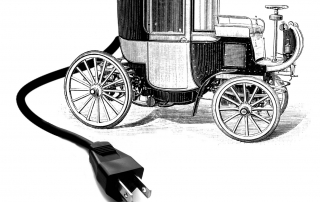Saving Fuel, Reducing Emissions: Making Plug-In Hybrid Electric Vehicles Cost Effective
Daniel Kammen,
Samuel Arons,
Derek Lemoine, and
Holmes Hummel
Cars and light trucks in the U.S. consume about eight million barrels of gasoline per day, more than total US petroleum production. They account for eighteen percent of national greenhouse gas emissions. Both motor vehicle gasoline consumption and emissions have been rising at about 1.5 percent per year.
Plug-in hybrid electric vehicles (PHEVs) could alter these trends. On a vehicle technology spectrum that stretches from fossil-fuel- powered conventional vehicles through hybrid electric vehicles to all-electric vehicles, PHEVs fall between hybrids and all-electrics. They have both gas tanks and batteries, like hybrids, and can run either in gasoline-fueled mode or in electric mode. Their batteries are much larger than batteries in other hybrids, and they can store electricity directly from the grid as well as electricity derived from regenerative braking, as do conventional hybrid vehicles. PHEVs combine the best aspects of conventional vehicles (long range and easy refueling) with the best attributes of all-electric vehicles (low tailpipe emissions and reduced petroleum use). Widespread use of PHEVs could reduce transportation-related GHG emissions, improve urban air quality, reduce petroleum consumption, and expand competition in the transportation fuels sector. Several companies now offer to convert hybrid vehicles to PHEVs, and several automakers have announced PHEV development projects.

